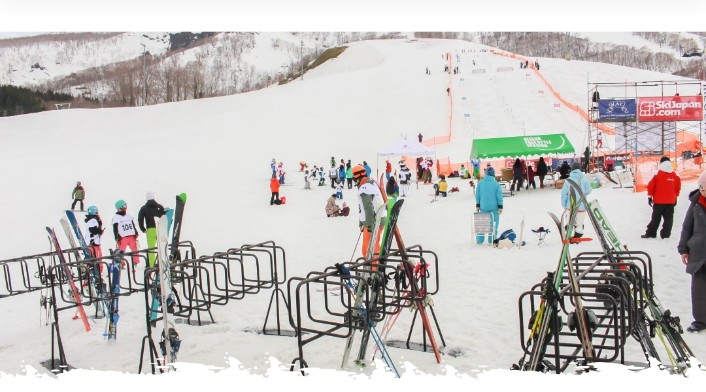Snowboarding enthusiasts know that hitting the slopes with confidence demands more than just a solid board and fresh powder. It requires a body that’s as prepared as the gear you strap on.
Whether carving down the runs at Niseko or any snowy retreat, the right physical training ensures a rewarding and exhilarating experience.
Core Strength for Stability and Control
To maintain balance and master those sharp turns and tricks, core strength is your greatest ally. Start with these essential exercises:
- Planks: A full-body workout that emphasizes the core. Hold your body in a straight line from head to toes, supported only by your forearms and toes.
- Russian Twists: Sit on the ground with your knees bent, lean slightly back, and twist your torso from side to side. For added intensity, hold a weight in your hands.
- Leg Raises: Lie on your back, legs straight, and lift them towards the ceiling until your butt comes off the floor.
Core workouts not only enhance balance but also significantly improve your ability to control the board, making every turn and jump feel seamless.
Leg Workouts to Boost Endurance
Strong legs will carry you through long days of back-to-back runs. Incorporate these exercises into your routine:
- Squats: The quintessential leg builder. Stand with feet a bit wider than shoulder-width apart, bend your knees and drop your hips to lower your body.
- Lunges: Great for the quads and glutes. Step forward with one leg and lower your hips until both knees are bent at about a 90-degree angle.
- Calf Raises: Stand on the edge of a step and rise onto your tiptoes, then lower back down for a full range of motion.
Building endurance in your legs means you can enjoy longer sessions on your board without fatigue.
Upper Body Conditioning
Don’t underestimate the role of the upper body in snowboarding. Strengthening your arms and shoulders will help you with:
- Push-ups: An effective exercise for building upper body strength.
- Pull-ups: Grip a bar with hands shoulder-width apart and pull your chin above the bar, then lower back down.
- Dumbbell Presses: Sit or lie on a bench and push a pair of dumbbells from chest height until your arms are extended fully.
These exercises enhance your overall stability, which is crucial for maintaining control and power during your ride.
Flexibility and Mobility Routines
Flexibility can be the difference between a smooth ride and a potential injury. Focus on these routines:
- Stretching: Incorporate both static and dynamic stretches to keep muscles limber.
- Yoga Poses: Specific poses like the Downward Dog or Warrior can increase your range of motion.
- Dynamic Warm-Ups: Gentle, movement-based stretches prepare the body for physical exertion.
Improving your flexibility ensures that your body can handle the twists, turns, and occasional tumbles with ease.
Cardiovascular Conditioning
A strong heart and lungs are essential for high-altitude sports like snowboarding. Cardiovascular workouts enhance your stamina and keep you agile on the slopes:
- Running or Jogging: Builds endurance and is a great way to increase your cardiovascular health.
- Cycling: Low impact and excellent for building leg strength along with cardiovascular fitness.
- Interval Training: Short bursts of intense activity followed by a period of rest or lower intensity; mimics the start-stop nature of snowboarding.
Incorporating these exercises into your routine a few times a week will ensure that you’re not only strong but also have the endurance to last longer on the slopes.
Mental Preparation
Snowboarding requires not just physical, but also mental agility. Mental preparation techniques can significantly boost your confidence and focus:
- Visualization: Imagine executing perfect runs and techniques. This mental rehearsal can enhance your actual performance.
- Breathing Techniques: Learn to control your breath to manage anxiety and improve oxygen flow to muscles, crucial for high-intensity sports.
- Progressive Muscle Relaxation: Helps reduce the physical symptoms of stress and prepare your body for intense physical activity.
These mental conditioning exercises will help you maintain focus, manage the stress of challenging runs, and enjoy a more composed snowboarding experience.
Nutritional Strategies for Peak Performance
Proper nutrition plays a pivotal role in any sport, and snowboarding and skiing are no exceptions.
Fueling your body correctly before, during, and after hitting the slopes can significantly enhance your performance and recovery. Here are some guidelines and meal suggestions to keep you energized:
- Pre-Activity Nutrition: Focus on carbohydrates for long-lasting energy. Meals like oatmeal, whole grain breads, fruits, and yogurt about 2-3 hours before snowboarding will sustain your energy levels.
- Hydration: Keeping hydrated is crucial, especially in cold weather when dehydration is less noticeable. Water is essential, and for longer activities, electrolyte-infused drinks can help maintain salt balance.
- During Activity Snacking: For long days on the slopes, bring easy-to-eat, high-energy snacks like bananas, granola bars, or nuts.
- Post-Activity Recovery: After a day of snowboarding or skiing, your body needs protein for muscle repair and carbohydrates to replenish energy stores. A meal containing lean proteins like chicken or fish, coupled with a carbohydrate like rice or potatoes, is ideal.
Incorporating these nutritional strategies will not only boost your stamina and strength but also improve overall health, helping you to perform better and recover faster.
Conclusion: Ready to Hit the Slopes
With these workouts under your belt, you’re better equipped to tackle any challenge the mountain throws your way. Embrace the preparation as part of your snowboarding journey.
For those looking to match their physical readiness with top-notch gear, explore additional resources to find what suits your needs. Keep training, stay safe, and enjoy the exhilaration of snowboarding like never before.
